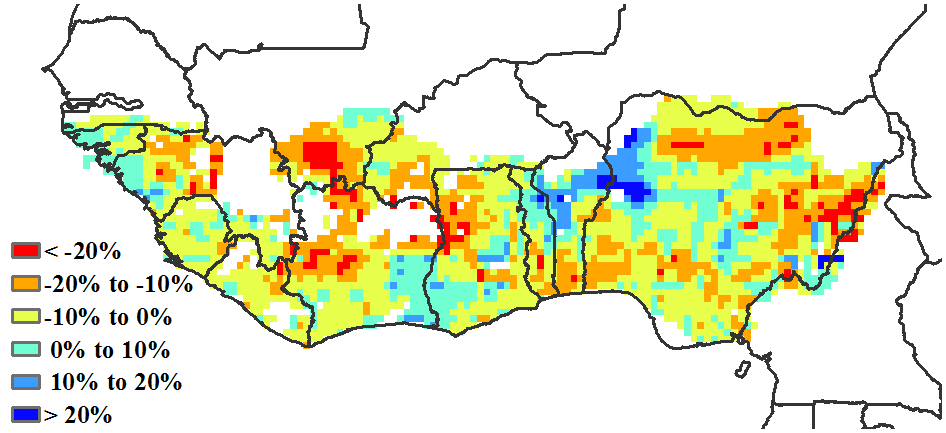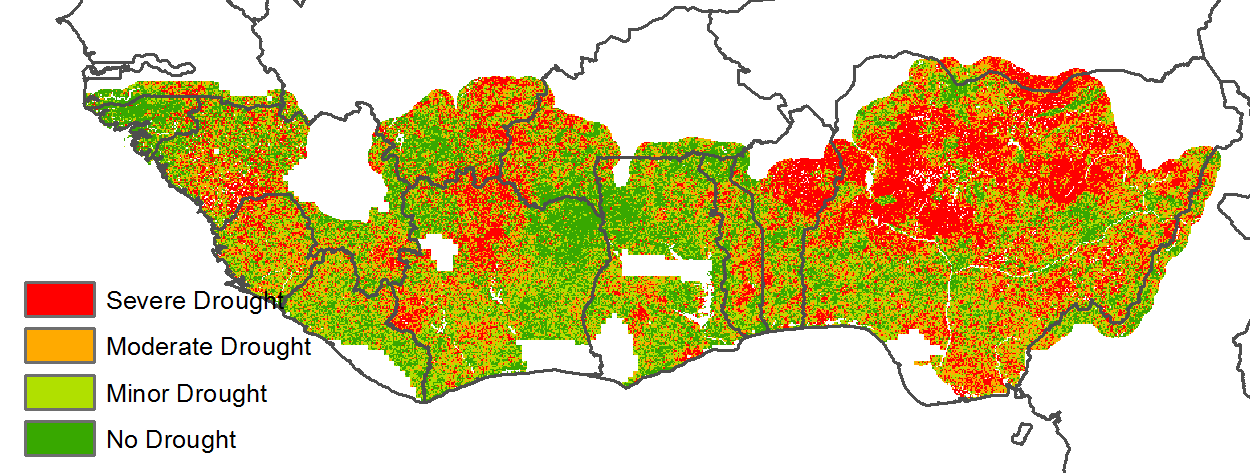The report covers the onset of the main rainy season in the West Africa Major Production Zone (MPZ), with main crops being the cereal crops (maize, sorghum, millet, and rice) and tuber crops (cassava and yams). The growing season onset started later than normal in most of the region, except for parts of central Nigeria and Togo, as well as southwestern coastal areas where the season started early. Overall, most of the region was characterized by below-average and erratic rainfall during this period, particularly the western parts (Guinea-Bissau and northern Guinea) and most of the eastern parts of the region (northern Nigeria) experienced below-average rainfall.. The most affected countries include Sierra Leone (-20%), Gabon (-16%), Nigeria (-14%), Guinea (-13%), Togo (-12%), Equatorial Guinea (-9%), Côte d'Ivoire (-8%), Liberia (-6%), Ghana (-5%) and Burkina Faso (-2%), while Guinea Bissau (+18%) and Benin (+6%) received above average. Temperature (TEMP) for the MPZ was slightly above average (+0.1°C), with stratified spatial-temporal variation effects across the MPZ and more pronounced departures in the north. The solar radiation was below average (RADPAR =1190 MJ/m2) as indicated by -1.3% and was reflected in the potential biomass production (BIOMSS = 1015gDM/m2) with a negative departure (-5%) from the 5YA.
The VCIx map as an indication of vegetation cover shows that the areas with the highest values (>0.8) were in the coastal and central regions, whereas lower values were observed in the northern parts of the MPZ, which were generally drier. The vegetation health index (VHI) map also depicts a spatial and temporal pattern affected by severe drought conditions. At country level, northern Nigeria and northern Togo were most affected.
The cropped arable land fraction (CALF) was at 89% with a slight decrease (-2%). The lowest CALF values were observed in Nigeria at 78% (-4%) and Burkina Faso at 61% (-14%). The low CALF values for Nigeria and Burkina Faso can be attributed to the generally dry environments. Based on these agroclimatic conditions in the MPZ attributed to below-average rainfall deficits, more well-established rainfall will be needed to support crop production especially in the drought vulnerable areas of the MPZ to ensure an adequate soil moisture supply for the growth of the main season crops, which are key to food security in the region.

Figure A: Spatial distribution of rainfall profiles

Figure B: Spatial distribution of temperature profiles

Figure C: Cropped and uncropped arable land

Figure D: Potential biomass departure from 5YA

Figure E: Maximum VCI

Figure F: VHI Minimum
